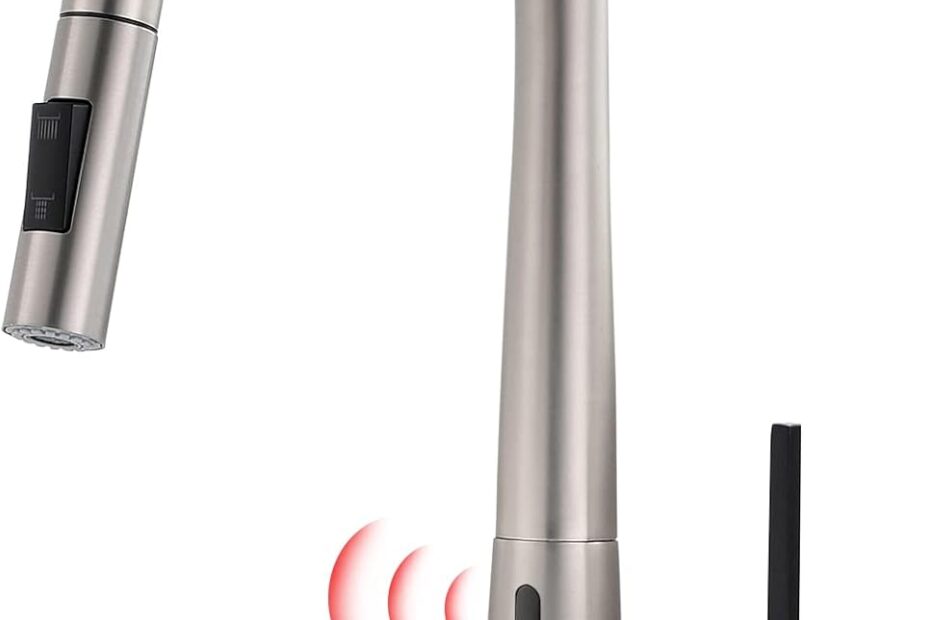Hi there! Have you ever wondered what a touchless kitchen faucet is? Well, you’re in luck. Let’s dive into this modern marvel that’s making its way into kitchens around the world.
Introduction to Touchless Kitchen Faucets
Touchless kitchen faucets are like magic. They sense your hands and turn on automatically. No need to touch. Amazing, right? Imagine you’re cooking and your hands are messy. With a touchless faucet, you don’t need to dirty the handle. Just wave, and clean water flows. Let’s break this down even more.
How Do Touchless Faucets Work?
Touchless faucets use sensors. These sensors detect motion. When you wave your hand near it, the faucet activates. It can also sense objects like utensils. Cool, huh?
Types of Sensors
There are a few types of sensors used in touchless faucets:
- Infrared Sensors: Most common. They detect changes in light reflection.
- Ultrasonic Sensors: These use sound waves.
- Capacitive Sensors: They sense the electrical field around them.
| Sensor Type | How It Works |
|---|---|
| Infrared | Detects light reflection changes |
| Ultrasonic | Uses sound waves |
| Capacitive | Senses electrical field changes |
Benefits of a Touchless Kitchen Faucet
So, why should you care about these? Here are some reasons:
- Cleanliness: Keeps germs away. No touch means fewer bacteria.
- Convenience: Super easy to use. Great for all ages.
- Water Savings: Some models have auto shut-off. Save water and money.
- Modern Look: Sleek and stylish. Fits any modern kitchen.
Let’s talk a bit more about each benefit.
Cleanliness
Touching a faucet with dirty hands means germs spread. A touchless faucet stops this. Kitchens stay cleaner.
Convenience
Kids can use it easily. So can elderly folks. If you have full hands, like when holding a pot, it’s simple to use.
Water Savings
You won’t forget to turn it off. Some faucets auto shut-off after a few minutes. This can cut down the water bill.
Modern Look
These are sleek. They look good in any kitchen. They add a touch of modernity.
Challenges and Considerations
Not everything is perfect though. There are some things to consider.
- Power Supply: Needs batteries or electricity.
- Sensor Sensitivity: Could be too sensitive or not enough.
- Cost: They’re pricier than regular faucets.
- Maintenance: More complicated to repair.
Power Supply
Most touchless faucets need batteries or an electrical connection. If you forget to change batteries, you could be in trouble.
Sensor Sensitivity
Sometimes they turn on by accident. Or, they don’t turn on when you want them to. Adjusting sensitivity can help.
Cost
They’re more expensive. But think of it as an investment. Savings on water bills can balance it out over time.
Maintenance
Fixing them can be complex. Regular faucets are simpler to repair. Make sure you know a good plumber.
| Challenge | Consideration |
|---|---|
| Power Supply | Needs batteries or electricity. Can be inconvenient. |
| Sensor Sensitivity | Might turn on/off accidentally. Needs fine-tuning. |
| Cost | More expensive than regular faucets. Initial cost is higher. |
| Maintenance | More complicated repairs. Requires professional help. |
Installation of Touchless Faucets
Installing these isn’t rocket science but it’s more complex than traditional faucets. Here the basic steps:
- Turn off water: Always start by shutting off the water supply.
- Remove old faucet: Take out the old faucet.
- Install new faucet: Follow the manufacturer’s guide.
- Connect sensors: Hook up the sensor controls.
- Turn water on: Turn back on the water and check for leaks.
- Test: Make sure everything works.
Popular Brands and Models
Some popular brands offer touchless faucets. Here’s a quick list:
- Moen: Motionsense Wave
- Delta: Touch2O Technology
- Kohler: Response Touchless
- Pfister: React Touchless
| Brand | Model |
|---|---|
| Moen | Motionsense Wave |
| Delta | Touch2O Technology |
| Kohler | Response Touchless |
| Pfister | React Touchless |
My Experience with Touchless Faucets
Now, a bit about my own experience. Installing a touchless faucet was a game-changer in my kitchen. I went for a Moen Motionsense Wave. It cost a bit more, but the convenience is worth it. I cook a lot, so cleanliness is vital. No more dirty handles!
At first, adjusting the sensor sensitivity was tricky. Sometimes it turned on when I walked by. But a few tweaks fixed that. Also, I had to remind myself to change the batteries every six months. Overall, it’s been a smooth ride.
Conclusion
Touchless kitchen faucets are truly an innovation in home technology. They keep the kitchen cleaner, save water, and add a modern touch. Yes, they can be a bit expensive and need some maintenance, but the benefits far outweigh these minor hiccups. Whether you’re a home chef, a busy parent, or someone who appreciates the finer things, a touchless kitchen faucet is a fantastic addition.
So, what do you think? Ready to make the switch to touchless?
Thanks for reading! Can’t wait to hear your thoughts and experiences with touchless kitchen faucets.
References
- “Touchless Kitchen Faucets: How Do They Work?” Home Faucet Guide.
- “Benefits of Touchless Faucets in Modern Kitchens,” Faucet World Online.
- “Top Brands for Touchless Faucets,” Kitchen Innovations Magazine.
